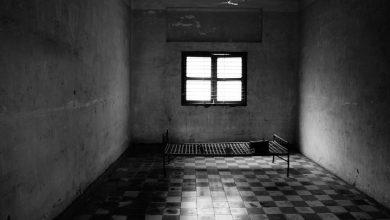#67. CHANGING POSITION TO OBSERVE THE NAAFILAH IN THE MOSQUE AFTER OBSERVING THE FARD
2. I do this before but I stop recently cos I dont know if it’s right, when people observe for example zuhri prayer, after that you have to offer another 4 rakat not compulsory doe, my question is why do we have have to move from the space we observe zuhri to another place to observe the nafilat….”
ANSWER
Wa alaykum salaam warahmatullaah wabarakaatuh
Alhamdulillaah
Dear One, as for the first part of your question, we have answered the question here before, and it shall be placed below for your benefit inshaaAllaah.
For the second question, some of the Fuqahaa have held that what you have described is preferred due to some of the Ahaadith that has come in that regard.
In the Hadith transmitted and recorded by Imaam Ahnad, Abu Daawud, and Ibn Hibban, from Abu Hurayrah, the Rasul – salallaahu alayhi wasallam – said:
: أيعجز أحدكم إذا صلى أن يتقدم أو يتأخر أو عن يمينه أو عن شماله.
“Is any of you incapable, after observing the Salaat (of Fard) of moving forward, backward, to his right or to his left?”
The Ulamaa said what is implied here is leaving his position to another position to observe the Naafilah.
The Rasul – salallaahu alayhi wasallam – is also reported by Al-Mughirah bn Ash-Shu’ba to have said:
لا يصلي الإمام في مقامه الذي صلى فيه المكتوبة حتى يتنحى عنه. رواه ابن ماجه وأبو داود
“An Imaam should not observe Salaat at the same position with which he observed the obligatory one until he has changed position.”
Imaam Ibn Maajah and Abu Daawud recorded the Hadith
Though there is some weakness in the two Ahaadith referred, the Ulamaa make evidence with it.
“And the two Ahaadith form the legal frame for shifting position by the one who just observed the Salaat from the place he had just observed the Salaat. And this applies for every naafilah he would observe in that same period.
As for the Imaam, then it is by virtue of the first hadith by specification (khusus) and the generality of the second hadith. And for the one who is led (Mu’tam) and the one who prays alone, it is by virtue of the generality of the second Hadith and by Qiyaas with the Imaam.
The legal factor (Illah) (for this) is in multiplying the places where Ibaadah is made, just as Al-Bukhaari and Al-Baghawi have stated. This is because the places of his Sujud will testify for him…”
‘Naylu Al-Awtaar’
Imaam Ar-Ramli – rahimahullaah – said:
“And it is Sunnah that he shifts for the purpose of Nafl or Fard from the position where he just observed Fard or Nafl to another position so that by so doing he increases the places where he observe the Sujud. This is because they will testify for him. And due to what it entails of giving life to that position with Ibaadah. But if he doesn’t change his position, he should separate both Salaat by speaking to others.”
Nihaayatu Al-Muhtaaj
Some of the Fuqahaa hold that it is better to remain in the same position to observe another Salaat. There evidence for this is the Athar recorded by Imaam Al-Bukhaari that Ibn Umar – radiyallaahu anhuma – would observe both the Fard and the Nafl in the same position without shifting places.
However, what is correct, and Allah knows best remains what is maintained by the majority that it is better to shift places so as to benefit from the hadith recorded by Imaam Muslim that the Rasul – salallaahu alayhi wasallam – said:
As stated, the position mentioned by Imaam Ash-Shawkaani is what holds more weight.
Allaahu A’alam
Jazaakumullaahu khayran.




